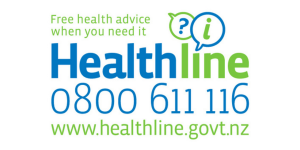Testosterone for women
Key points about testosterone therapy for women
- Testosterone can help some postmenopausal women with distressing low sexual desire, but only after other causes are checked.
- It’s usually considered when menopause hormone therapy isn’t suitable or effective.
- Learn more about testosterone therapy for women.

Testosterone has been found to be effective in treating postmenopausal women with a recent decline in sexual desire accompanied by distress. This is called hypoactive sexual desire disorder (HSDD). Libido, or your desire for sex, is a complex experience and a mix of many things, including your body, feelings, and relationships. Your life experiences, both past and present, along with hormones, can affect your desire for sex and how you respond to it.
Since there are many reasons why someone might have HSDD, it’s important to talk to a professional if you think you might have it. A healthcare provider, therapist, or counsellor can support you and help you understand what might be causing it.
Testosterone therapy should only be considered after other causes have been looked into. Testosterone is usually used for HSDD when menopausal hormonal therapy is unsuitable or has not worked well. It's advisable to get the menopause hormone therapy dose right before considering testosterone, as improving changing oestrogen levels may be enough.
Testosterone may not be helpful for the following
There's a lack of evidence to support the use of testosterone for the treatment of:
- Women who haven’t gone through menopause and have low interest in sex (HSDD).
- Depression or low mood.
- Bone loss.
- Weight gain.
- Long-standing low sexual desire.
More research is needed to understand how testosterone affects women, in other ways, such as muscle strength and bone health. If testosterone does help, which hasn’t been proven yet, it could change how we treat osteoporosis and muscle loss as women get older.
Testosterone is commonly regarded as a male hormone, but it's also naturally present in women. It plays a key role in sexual function, vaginal health, energy levels, bone strength, and mental clarity.
- Testosterone levels in women are usually highest in their 20s, then slowly decrease with age.
- As women approach menopause, the ovaries produce less testosterone, and levels decline even further after menopause.
- In women over 65 years, testosterone levels remain stable.
A sudden drop in testosterone can happen if both ovaries are removed (surgical menopause). Other reasons for low testosterone in women include:
- Taking the oral contraceptive pill, which can stop the ovaries from making testosterone.
- Using oral steroids which can lower testosterone made by the adrenal glands.
- Anti-androgen treatments that may be used for acne, excess hair growth, or hair loss, as these medicines block testosterone’s action in the body.
- Complete loss of pituitary gland function (called panhypopituitarism).
To find out the exact cause, it's best to speak with your healthcare provider.
Testosterone preparations designed for men are unsuitable for use in women because they may lead to development of male physical characteristics (called virilisation). Testosterone transdermal gel (Testogel) is not recommended due to lack of studies in women.
Androfeme testosterone cream
Androfeme testosterone cream is designed specifically for use in women.
- The cream is applied once daily to your outer thigh or buttock (bottom).
- Your healthcare provider will arrange for you to have blood tests before you start treatment. This is not to make a diagnosis of sexual problems, but rather, to ensure that testosterone is not used in women with unexpectedly high testosterone levels. Your healthcare provider will usually recheck your testosterone blood level after 3 to 6 weeks of treatment, to assess your dose.
- The effects of Androfeme are not immediate. It can take up to 8 to 12 weeks before you notice any effects. If there is no improvement after 6 months, your healthcare provider will stop Androfeme.
- Androfeme is not funded and will cost you about $100 a tube, which lasts around three months.
Androfeme is not suitable for everyone
Androfeme is not recommended if you have:
- severe acne or hirsutism (excessive growth of dark hair)
- known or suspected breast cancer or androgen‑dependent cancer
- nephrotic syndrome
- a history of blood clots or hypercalcaemia.
Androfeme is also not recommended if you're pregnant, breastfeeding or can fall pregnant (unless reliable contraception is being used).
References
- Testosterone and women(external link) Australasian Menopause Society
- Testosterone use in women(external link) Australasian Menopause Society, 2024
- Testosterone replacement in menopause(external link) British Menopause Society, 2022
- Androfeme(external link) Medsafe Consumer Information Sheet, NZ, 2025
- Androfeme(external link) Medsafe Datasheet, NZ, 2025
Credits: Sandra Ponen, Pharmacist, Healthify He Puna Waiora. Healthify is brought to you by Health Navigator Charitable Trust.
Reviewed by: Dr Alison Payne, Specialist General Practitioner, Martinborough; Angela Lambie, Pharmacist, Auckland
Last reviewed:





